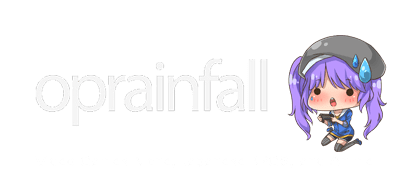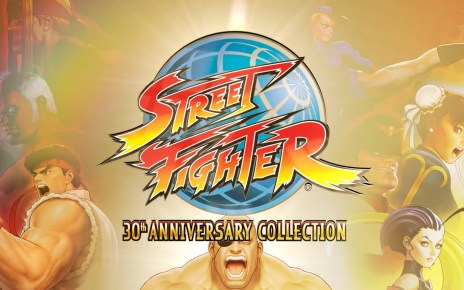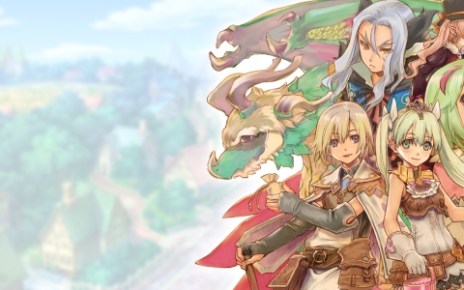If you are a FINAL FANTASY VII fan, or even a fan of FINAL FANTASY in general, then you undoubtedly know that one of the biggest releases of 2024 was FINAL FANTASY VII Rebirth exclusively on the PlayStation 5. A few months after the game was released, AWR Music, in conjunction with SQUARE ENIX, embarked on a worldwide orchestra tour to bring the music of the game to fans far and wide.
After attending the debut performance for FINAL FANTASY VII Rebirth Orchestra World Tour in Los Angeles, I was lucky enough to sit down for an interview with one of the two conductors for the tour, Arnie Roth. In Part One of this two-part interview, we talk about his background, the role a conductor has in an orchestra and with a video game concert series, and more.
You can check out my review of FINAL FANTASY VII Rebirth Orchestra World Tour here.
You can also purchase tickets for FINAL FANTASY VII Rebirth Orchestra World Tour now.
Finally, you can find out more about AWR Music at their official website, on Instagram, on Facebook, on LinkedIn, and on X.
This interview has been edited for content and clarity.
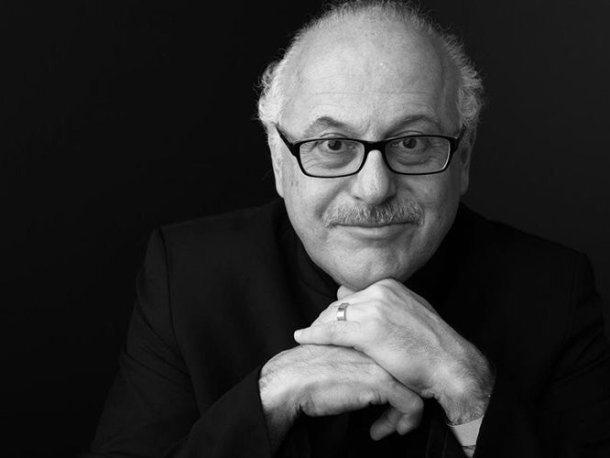
Operation Rainfall: My name is Quentin H. with Operation Rainfall, and you are?
Arnie Roth: Arnie Roth – I am the producer, conductor, and music director of FINAL FANTASY VII Rebirth Orchestra World Tour. I also did [FINAL FANTASY VII] Remake [Orchestra World Tour], producer and conductor of Distant Worlds for many, many years, NieR – another video game series – and several others. But that’s me!
OR: You said in an interview with GameCloud back in January 2016 that you studied the violin when you were eight, and that became your focus when you received your Bachelor and Master of Music degrees at Northwestern University before you gradually shifted into a role of producer, conductor, and composer/arranger. And I think this started with the video game Halo where you were a musical arranger alongside actually performing the violin on the score in 2001, and as a composer/conductor on the movie Barbie as Rapunzel in 2002.
What made you want to go from only playing music on the violin to being more involved with the whole creative process? It is a pretty big step, after all.
AR: You have to actually go back and look – I commend you on the history. But you have to go back and look at more, because that will inform the decision a little bit. Yes, I was a violinist for…I don’t know how many years…Fifty years? Or more? But the point is that as I was doing more and more national television and radio recording work, album recording, and things like that – I was doing a big volume of writing arrangements for the various artists and products as well.
As I would do more writing, I would be asked by the actual artists themselves to come out to do the concerts live when they performed these new arrangements. So, I was doing more and more conducting and writing and arranging. Eventually, some artists started asking me to produce entire concerts and shows for them. Diana Ross, Peter Cetera, Jewel, Charlotte Church, a whole bunch of artists over the years.
And that led to my being appointed the music director and conductor of Chicagoland Pops Orchestra here in Chicago. That orchestra was in existence for a good number of years. While it was in existence, we were doing research about new products and new entertainment options because I would be creating the subscription series every year – three or four artists, that kind of thing, with the orchestra.
I decided after researching about what Japan was doing with video game concerts in the late 1990s and early 2000s to offer to do Dear Friends: Music from FINAL FANTASY. And that was actually the start of all the video game production in terms of AWR producing concerts.
Yes, you’re correct: I did, as a violinist and an arranger, work on Halo. Because it happened that the two composers, Martin O’Donnell and Michael Salvatori, very close friends of mine – they were working here in Chicago, and we were working on many other projects. It just happened that they were working on Halo, and I helped them with some orchestra arrangements on that.
“And I can stretch these things with particular poignant moments with Aerith or an exciting moment with a battle medley. We can go further with that live in the concert. We can do bigger hits on some of the same points, different than what they saw in the game – yet preserving the performance as very much the same as they are dealing with in the game.
So yes, we’re trying to stay as close to the performance template as they heard in the game, but we make the music breathe alive.”
OR: Did you have a background in playing video games before this?
AR: Not really before that, only just casually. Not with the intent of it ever becoming a concert situation. Which is interesting in and of itself – I mean, [that] my life went that direction. I think you need to look again at a wider net, if you look at what orchestras are doing these days. There’s an awful lot of movies with live orchestras happening. This never happened 15, 20 years ago. That started happening almost concurrently when we were starting to introduce video game concerts. I think there is kind of a broadening of all these things. At the very beginning, it was something like ‘is that really going to be a ticket-selling entertainment item?’ Many orchestras and presenters didn’t believe that [it would be] at the beginning. So, it’s taken a good number of years – now it’s quite in-demand – and we’re going all over the place, all over the world, with these things. But it’s been an interesting road.
OR: Did you see the movie Tár?
AR: I did.
OR: During the [movie’s] opening, Lydia Tár talks in an interview about how time is the essential piece of interpretation, and how her left hand shapes the music while her right hand marks time and moves it forward and stops it as she wishes.
In the lead up to the ending where she is conducting a Monster Hunter: World orchestra performance, the film takes pains to make it look like she has no ability to interpret that game’s score beyond what is on the paper and what the composer thinks about it.
How true is this? Are you merely a human metronome through and through at a video game concert? Or do you have the space to interpret the music score of composers like Nobuo Uematsu, Masayoshi Soken, Yoko Shimomura, and Masashi Hamauzu for yourself to an orchestra and for the public?
AR: There’s several parts to that question.
From the movie Tár, and I only saw it once – but at the end of it, where she was sayin the basic concept that you’ve giving the orchestra the basic timeframe work with your right hand, mostly – those that are right-handed – and with your left, you’re doing some separate cuing and shaping. You’re doing that with your right hand as well. There is a lot that can be done with the two hands. There’s a lot you can do with the two hands with shaping music.
Now, you have to look at what we do in the various productions. There are productions where we need to stay very faithfully with the pre-lay and the tempo met[ronome]. Sometimes that’s met with a click track that’s fed to some of the musicians in the orchestra and the conductor. Sometimes the entire orchestra – I can give you examples of that kind of thing.
I am very fortunate that for Distant Worlds, they are allowing me – and this is very much because of the way we started this with Nobuo Uematsu – but they [SQUARE ENIX] are allowing me and AWR to be more free to conduct this music without a click track. It’s my duty to get close to the way that all the fans have heard it in the game, of course, and Distant Worlds was kind of a unique situation. In Distant Worlds, we have each one of the scores represent one song or one sequence from a specific game. And obviously, in Distant Worlds, we’re trying to represent the entire FINAL FANTASY series as much as we can.
So, that’s challenging in and of itself. But the idea of having freedom to be able to stretch a cadence a little longer, to be able to push a tempo a little faster – we use synchronizing techniques. Obviously, it’s not using a click track with Distant Worlds, for the most part. But there are visuals, there are various things that I can watch on the conductor video [so] that I know the arrival point is happening [for it]. And knowing the music really well, I am able to accelerate to get to that arrival point – or if we’re ahead, I’m able to pull it back a little bit.
The good news is that all of these things are not designed by SQUARE ENIX to be what we call ‘hard sync.’ To give you an example of ‘hard synchronization:’ if the rabbit hits the wall, and the cymbal crashes five seconds later, even a five-year old knows that there is a problem, that the sync isn’t working. So, we never have that kind of thing like a cartoon – slam into a wall, everything has to stop or crash, right? We have battle scenes, of course. It’s mostly gameplay cuts and things like that. So, that gives us more flexibility in terms of our sync and how tightly we have to be in sync with that.
Now FINAL FANTASY VII Rebirth – we are staying very tightly in sync with the video as much as possible. But still, we’re staying in the same template of not using a click track for the entire orchestra. As soon as you do that, if you put all the musicians on stage with a click track, they start tuning out some of their own performance. They’re focused in on the metronome that’s going on in their ear, basically. And we really prefer for the orchestra to work with me, musically, if the music can breathe.
You also have to look at this from a video game standpoint. These players, of listening to the same recording of the same music with the same dynamic progression and the same tempo every time they play the game. For the first time they come to the concert, and all the sudden they can see the full dynamic range, really, pianissimo and fortissimo off the top – because in the game, they don’t want the players to have to reach for the volume, obviously, reaching to move it up and down all the time. So, it’s very compressed, right? Everything kind of meets in the middle. So, we can do that. That’s another function of what the live concert can do.
And I can stretch these things with particular poignant moments with Aerith or an exciting moment with a battle medley. We can go further with that live in the concert. We can do bigger hits on some of the same points, different than what they saw in the game – yet preserving the performance as very much the same as they are dealing with in the game.
So yes, we’re trying to stay as close to the performance template as they heard in the game, but we make the music breathe alive.
“You’re pointing out…some of the reasons and directions that a conductor can have on the performance and the very reason that we’re not using a metronome or a click track.
It’s for that reason I can shape that Aerith’s Theme melody with the pianist. I can ask where they might put the emphasis on which note to make it a little more poignant or make a little more finality to the cadence of that melody. There are all these little things that I can do with rehearsal.”
OR: I want to follow up on that. How do you see your relationship with the orchestra? I know that Andris Nelsons, who is the music director at the Boston Symphony Orchestra, believes that the composer is the driving force, the conductor encourages and leads the performers, and there is a hierarchy there. How do you see your role with them?
AR: The conductor is the leader. The orchestra doesn’t start, doesn’t pause, doesn’t take a tempo for any of this without the conductor showing them. And he or she is also the leader in terms of making the musical interpretation and statement. You can set up a click track and a metronome, and just have them play the notes. And certainly, all the greatest orchestras have played many of these pieces, classic scores – you know: Brahms, Beethoven, Tchaikovsky, Ravel – they can play this, that isn’t the issue. The notes are there. The issue is trying to make a musical statement, and pulling it back, arriving at a certain point, maybe you want to accent something new in the rhythm to push a particular structural point you’re trying to show people.
All of these things have to be thought about by the conductor in advance of any rehearsing. And I’ll say another thing: musicians are very particular about rehearsal technique. It’s critically important that you not waste their time or any rehearsal time. That you really have a plan mapped out, that you make very good use of all the precious seconds and minutes you have. For many of these things – because we don’t have that many rehearsals – they may be fabulous musicians, but you really have to have a plan heading into this of how much time can I spend on this score, how much can I move forward. How much I’m able to show them in the concert – and I don’t have to go over this again in the rehearsal. I can save some of the gestures for later.
I will tell you that when I first started doing these, you filled up the experience of how to do this over many years. This isn’t something you learn immediately. And that’s one of the issues for conductors: There’s not as much opportunity for new conductors and young conductors to get out there and practice rehearsal technique. That’s really critically important.
OR: To add on to that: Looking at the FINAL FANTASY VII Rebirth Orchestra World Tour schedule: on August 31st and September 1st, you conduct the Osaka Symphony Orchestra, on September 7th and 8th, you conduct the Tokyo Philharmonic Orchestra in Kanagawa, and then on September 13th, you conduct the Metropolitan Festival Orchestra and Singapore Choir in Singapore. You’re working with all of these orchestras in a very compressed time [window] as a guest conductor because you’re not their full-time conductor.
AR: Correct.
OR: Taking Aerith’s Theme in the performance’s second half as an example: you can easily explain the technical language of the score. For example, asking your pianist to play a D Major triad in inversion followed by a first inversion A minor triad, all of these broken chords in common time – it is the famous six-note non-functional harmony everyone recognizes.
But how do you get across the emotional and associative language of that music’s heart with the game, its story, and its characters in that narrow of a time window with these different orchestras you’re popping in with? After all, technicality alone doesn’t show the soul of a musical piece.
AR: You’re pointing out by that question some of the reasons and directions that a conductor can have on the performance and the very reason that we’re not using a metronome or a click track. It’s for that reason I can shape that Aerith’s Theme melody with the pianist. I can ask where they might put the emphasis on which note to make it a little more poignant or make a little more finality to the cadence of that melody. There are all these little things that I can do with rehearsal. Every one of these three that you just mentioned – Osaka, Tokyo Philharmonic, Metropolitan Festival – and by the way, this next weekend, I’m going to Forth Worth for the Fort Worth Symphony – I’ve worked with every single one of those orchestras before in the past. So, although I am a featured guest conductor, these are all familiar orchestra who’ve worked with me. I’ve worked with them many times, and I have no problems with them.
So, I’ve worked with all of them before, so it won’t be a big surprise to them or to me to work together. Not only that, but when you mention something like Aerith’s Theme, this is something we would have played in Distant Worlds concerts as well. So, they have some experience with that. We’ve actually gotten to an age with video game music – particularly classic ones like Aerith’s Theme, One-Winged Angel, To Zanarkand – for many of these orchestras have played these things with me before. So, there is some knowledge of what I’m going to do with them.
With FINAL FANTASY VII Rebirth – there’s a lot of big surprises in there for them. Even though a lot of it is based on things, you have this huge battle theme from FINAL FANTASY VII, you have this really difficult J-E-N-O-V-A battle epic – lots of very difficult things. You also have the very fun Suzuki scores that we are doing: Bare Your Soul and Queen’s Blood, the card game, is fantastic. And by the way: [Queen’s Blood is] very difficult for the orchestra as well. It’s a very fast tempo thing. And in this concert, the orchestra’s being asked to do many different styles.
We have a big band in Queens Blood, you have a grand parade in Rufus’ Welcome Ceremony, you have all this battle music, and then of course, you have this classic, poignant music like Aerith’s Theme. I would say more than Remake, we have many more styles in this one that an orchestra has to be able to handle well.
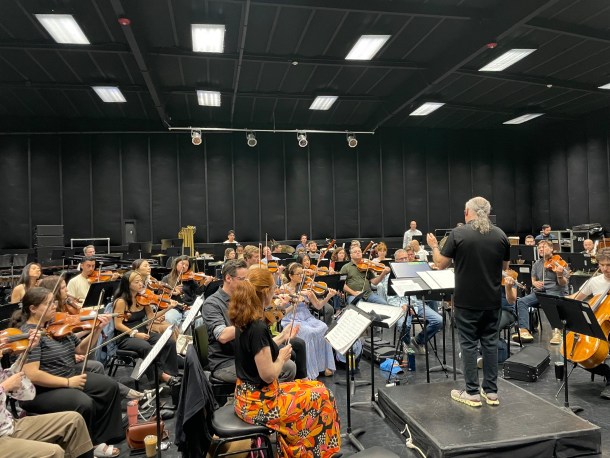
OR: One of the biggest surprises for me at the FINAL FANTASY VII Rebirth Orchestra World Tour was that No Promises to Keep was presented as an instrumental, and that in the game itself, it is a vocal song.
Why go that route in presenting that score instead of having a guest vocalist, assuming Loren Allred wasn’t available, [to] perform it at different stops? To add onto that – how did you go about adapting a vocal piece to become an instrumental?
AR: You actually heard the adaptation of the vocal piece as an instrumental. It’s really not my decision whether to use a vocalist or not. [SQUARE ENIX] made a decision that if we were going to present this as a vocal, we had to have Loren Allred. She wasn’t available for the entire tour, which is no surprise. We were very fortunate to get her to be available for the New York performance, and that’s the only one she’s doing. But the reality is that SQUARE ENIX made the decision that we would do it as an instrumental.
I understand the frustration with that, and we could have hired another vocalist to do it. They didn’t want to substitute with somebody who wasn’t in the game. I will tell you that it’s a challenge for me, in that one of the ways that you can do that is give the first violins the basic vocal melody for most of it and then it goes to some other instruments throughout the arrangement. That’s the easy way to replace the vocal. What’s difficult for me, speaking of timing here, is trying to match the tempo exactly with Aerith on screen singing this thing and her lips literally on the same rhythm as we’re doing. That one is kind of tough to do with the orchestra. You can be a fraction of a second off, but I think everyone understands that it is an instrumental, it’s not a vocal singing that, so. But other than that, I think it works, but clearly everyone loves that song, which is interesting to me.
You know Nobuo is famous for that kind of song – it’s his classic M.O. He’s done a lot of those pop classic-kind of songs. You think of Kiss Me Goodbye, you think of Eyes On Me – they are all in that ‘mold’ of Western-classic song-style. A different one is like Suteki De Ne, from [FINAL FANTASY] X, which is quite different. We love that. Or the anthem from FINAL FANTASY XIV, Answers, very different, a beautiful piece. We love all the different songs that are involved. We just actually worked with Amanda Achen doing a lot of the XIV songs that Soken has written, and she’ll be doing more work with us as well.
And that wraps up Part One of our interview!
Please return on Friday for Part Two where we talk a bit more about the setlists for FINAL FANTASY VII Rebirth Orchestra World Tour and Distant Worlds, about the one-off FINAL FANTASY VII Symphonic Reunion concert in 2019, and more!
Tickets for FINAL FANTASY VII Rebirth Orchestra World Tour are on sale now.
Have you attended FINAL FANTASY VII Rebirth Orchestra World Tour?
If so, what do you think of it?
Let us know in the comments below!
